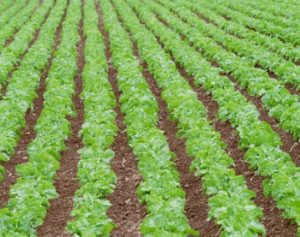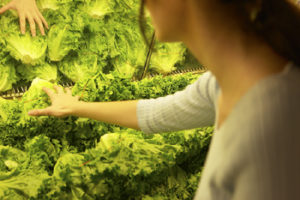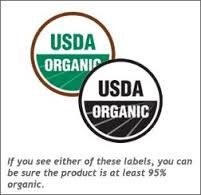
- Pesticides that are applied to conventionally grown crops have been linked to disorders in the central nervous system and other illnesses, as well as serious environmental problems like contaminated groundwater and reproductive failure, mutations and even extinction of birds and other animals.
- Scientists worry that hormones which have been fed to beef and dairy cattle can ultimately affect child development.
- Research presented at England’s Soil Association’s annual conference in January 2005 found that milk from cows raised organically had 75% higher levels of beta-carotene, 50% higher levels of vitamin E, and was two to three times richer in the antioxidants lutein and zeaxanthine. Dr Charles Benbrook of The Organic Center found that organic fruits and vegetables averaged 33% more antioxidants than conventionally grown produce in 13 out of 15 studies. Unfortunately, the amount of organic food available to us in supermarkets is minuscule; only between 2% and 4% of the total food supply is considered organic. The good news is that organic food sales are growing 15-21 percent each year, according to Forbes magazine; two-thirds of Americans report buying at least some organic foods.
What Organic Food Should You Buy?

EWG says reducing pesticide exposure is smart since the cumulative effect of even low-level, multiple exposures to pesticides could be quite serious.
The U.S. Environmental Protection Agency believes that infants and children may be especially sensitive to health risks posed by pesticides because their internal organs are still developing and maturing. Plus, in relation to their body weight, infants and children eat and drink more than adults, possibly increasing their exposure to pesticides in food and water . Some fruits and vegetables are more likely than others to retain pesticides after they are harvested. Given that organic foods can be more expensive than those grown using pesticides, Environmental Working Group and other organizations say consumers who want to economize and still shop organically should focus their shopping dollars on the following produce first. If organic is not available, wash and peel (where possible) the produce before eating it, or choose fruits and veggies that are consistently less contaminated.
Organic Food Purchase Priorities
- Apples
- Bell Peppers
- Celery
- Cherries
- Imported Grapes
- Nectarines
- Peaches
- Pears
- Potatoes
- Red Raspberries
- Spinach
- Strawberries
You can get EWG’s wallet-size advisory guide to take with you when you shop here.
Meat and Dairy Buying organic meat and dairy products is also becoming an increasing priority for many consumers. Antibiotics that are used to treat animals may promote antibiotic-resistant strains of bacteria in humans. Cows fattened on animal feed made with parts from dead animal parts run the risk of contracting mad cow disease, which could be passed along to people. Milk from cows treated with bovine growth hormone may increase some cancer risks. Most grocery stores carry at least one brand of organic milk, if not more. Organic meat is more difficult to come by. Consumers Union recommends avoiding processed meats such as hot dogs and preground hamburger, among other steps, in When Buying Organic Pays (and Doesn’t). Also see Meat, Seafood, Poultry here.
What does “organic” mean? 
Some producers who don’t get certified by the USDA still claim their food offers some of the benefits described under USDA’s organic standards guidelines. They might label their products “free range,” “natural,” “hormone-free,” “good for the Earth,” “sustainably produced,” or anything else that makes them sound like they’re good for you and the environment. These claims might be valid. They might also be intended to give the companies a marketing boost; if the claims are unverified, they won’t necessarily represent practices that protect you or the environment.
Separate Fact from Fiction If you want to be absolutely sure that the food you’re buying is organic, look for the USDA Organic Seal or the federally-sanctioned words “Made with Organic Ingredients.” If you’re confused about a claim a farmer or food producer is making, you can research it at www.eco-labels.org. You can also visit a company’s website to review the environmental claims they make about their products. Look for hard scientific evidence and third-party verification to back up a company’s claims.
The Food Alliance operates the most comprehensive third-party certification program in North America for “sustainably” produced food. The Food Alliance feels that it goes beyond the USDA organic label by distinguishing foods produced by farmers and ranchers who provide safe and fair working conditions, promote healthy and humane treatment of animals; raise animals without added hormones and antibiotics; grow crops without genetically modified organisms, reduce the use of pesticides; conserve soil and water resources; and preserve and protect wildlife habitat. TFA-approved foods can be bought throughout the Midwest and Pacific Northwest.
Dining Out
Want to eat organically at a restaurant? See Green Restaurant Certification & the Perks of Green Dining
Need more proof that organic is better for you? The Organic Consumers Association offers a good explanation here.
Organic Food vs. Local










